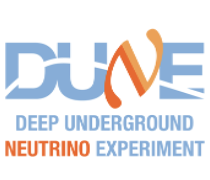DUNE

From 2029, the DUNE experiment will measure the change in flavour of an intense beam of neutrinos created at Fermilab (Illinois) after 1300 km of propagation. In the SURF mine (South Dakota), 4 giant modules will serve as distant detectors. These modules, each weighing 10 kt, will be Liquid Argon Time Projecting Chambers (TPCs), a technology that enables neutrino interaction to be reconstructed with excellent spatial and calorimetric resolution. These characteristics are essential for meeting DUNE’s objectives: measuring the mass hierarchy and CP violation phase of neutrinos.
DUNE is studying several designs for these modules. The ‘Double Phase’ design, to which LAPP has made a major contribution, aims to amplify the electrical signal before it is collected in a layer of gas. However, major technical difficulties have forced DUNE to simplify this design to that of ‘vertical drift’, where the electrons are collected by perforated Printed Circuit Board (PCB) plates without amplification. LAPP has played a major role in building a prototype at CERN that will validate this new technology.
Activities in LAPP
There are many contributions:
- Double Phase project:
- Design and construction of mechanical support for Charge Readout Planes (CRPs)
- CRP suspension and automation system
Electronic board for the light detection system
- Vertical Drift Project:
- Design and construction of the mechanical support for the CRPs
- Assembly of the CRPs
- Integration
Completed Phd thesis and Habilitation
- Pablo Kunze – Phd’s defense – oct. 14, 2023 – Data study of a double phase liquid Argon TPC prototype for the optimization of the neutrinos oscillation experiment DUNE
Collaboration
The DUNE (Deep Underground Neutrino Experiment) is a major international collaboration, bringing together more than 1,400 scientists, engineers and technicians from 30 countries, including CERN. This diverse collaboration is dedicated to the study of neutrino oscillations, a key area of particle physics.
France plays a central role in the DUNE collaboration. The main institutions involved are the CNRS (Centre National de la Recherche Scientifique) and the CEA (Commissariat à l’Énergie Atomique et aux Énergies Alternatives). Six IN2P3 laboratories (APC, IJCLab, IP2I Lyon, LP2I Bordeaux, LAPP, LPSC) and CEA’s Irfu are actively participating in the experiment. The French contributions cover various aspects, from the design of the detectors to participation in the scientific activities.
The Laboratoire d’Annecy de Physique des Particules (LAPP) plays a significant role in the DUNE collaboration. The LAPP is involved in the development of the detectors and in fundamental scientific research on neutrinos.
Actualités
- All
- Science

On June 21st the WA105 prototype detector saw its first tracks from cosmic rays. This is an important step towards


